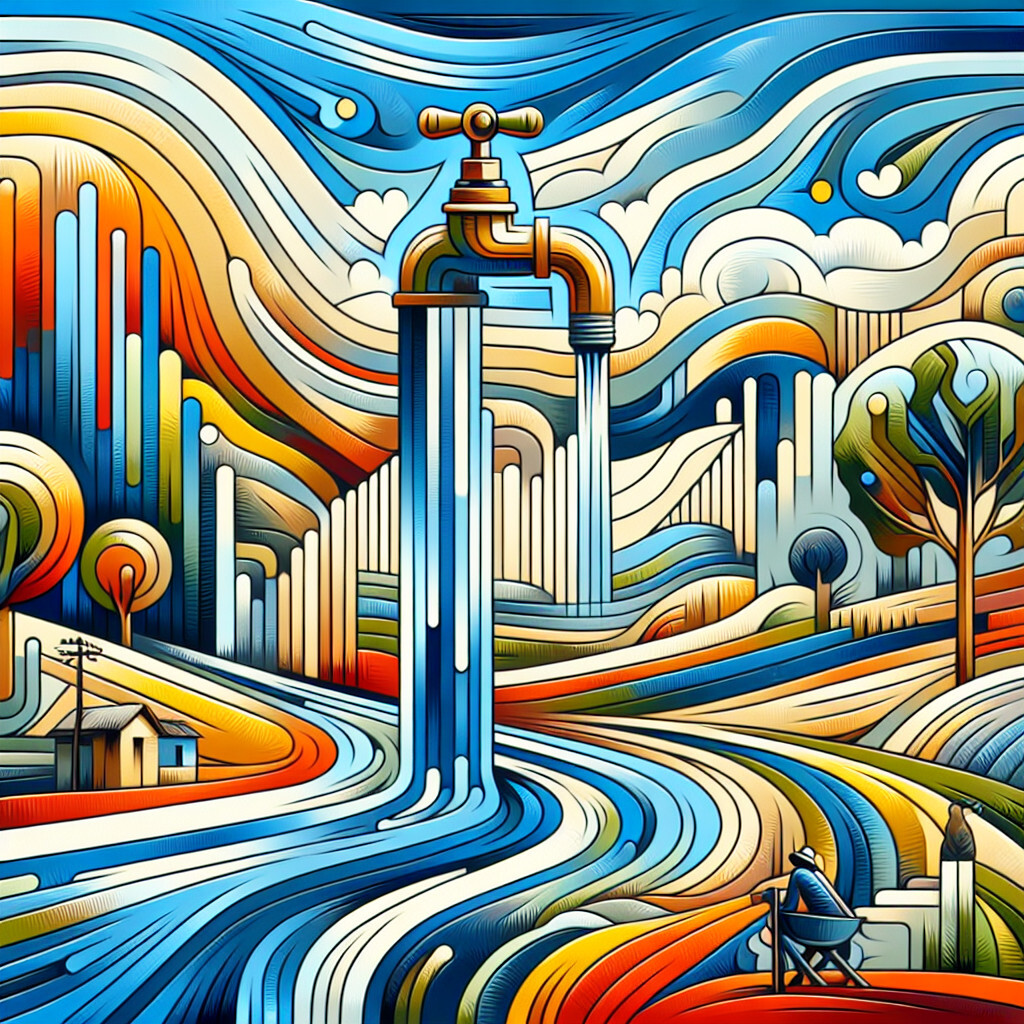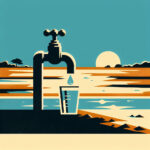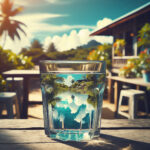-
Table of Contents
“Madagascar’s Tap Water: A Challenge of Purity and Accessibility.”
Introduction

The tap water in Madagascar is generally not safe for consumption due to the country’s underdeveloped infrastructure and lack of proper sanitation. The water supply is often contaminated with harmful bacteria and parasites, leading to a high risk of waterborne diseases. Despite efforts to improve the situation, access to clean and safe drinking water remains a significant challenge for many residents, particularly those living in rural areas. Therefore, it is often recommended for visitors to drink bottled or boiled water.
Understanding the Quality of Tap Water in Madagascar
Madagascar, an island nation located off the southeastern coast of Africa, is renowned for its unique biodiversity. However, despite its natural beauty, the country grapples with a significant challenge: providing clean, safe tap water to its inhabitants. The quality of tap water in Madagascar is a topic of concern that requires a comprehensive understanding.
The primary source of tap water in Madagascar is surface water, including rivers, lakes, and reservoirs. However, these sources are often contaminated with harmful bacteria, parasites, and pollutants due to inadequate sanitation facilities and industrial waste. Consequently, the tap water in many parts of the country is not safe for direct consumption without prior treatment.
The quality of tap water varies significantly across the country. In urban areas, such as the capital city Antananarivo, the water supply is managed by JIRAMA, the national water and electricity company. JIRAMA treats the water before distributing it to households, making it relatively safer for consumption. However, the treatment process is not always effective in eliminating all contaminants, and the water quality can be inconsistent. Therefore, it is advisable for residents and visitors in urban areas to boil tap water or use water purification tablets before drinking.
In contrast, the situation is more dire in rural areas, where access to clean tap water is a luxury. The majority of rural households rely on untreated surface water or shallow wells for their water needs. These sources are highly susceptible to contamination, leading to a high prevalence of waterborne diseases such as cholera and typhoid. The government, in collaboration with international organizations, has initiated several projects to improve rural water supply systems. However, progress has been slow, and safe tap water remains inaccessible to many rural communities.
The quality of tap water in Madagascar is also affected by seasonal variations. During the rainy season, the risk of water contamination increases due to runoff from agricultural lands and overflowing latrines. On the other hand, during the dry season, water scarcity becomes a major issue, especially in the southern parts of the country. These seasonal challenges further exacerbate the country’s water crisis.
Despite these challenges, there are ongoing efforts to improve the quality of tap water in Madagascar. The government has launched a national water policy aimed at ensuring universal access to safe drinking water by 2030. This policy includes measures such as upgrading water treatment facilities, promoting rainwater harvesting, and improving sanitation practices. International organizations, such as UNICEF and the World Bank, are also supporting these efforts through funding and technical assistance.
In conclusion, the quality of tap water in Madagascar is a complex issue influenced by various factors, including geographical location, season, and infrastructure. While the tap water in some urban areas may be safe for consumption after treatment, it is generally not advisable to drink tap water directly in most parts of the country, especially in rural areas. However, with concerted efforts from the government and international partners, there is hope for significant improvements in the future. Until then, residents and visitors are advised to take necessary precautions to ensure the water they consume is safe.
The Challenges and Solutions for Tap Water in Madagascar
Madagascar, the fourth largest island in the world, is a country of stunning biodiversity and rich cultural heritage. However, it is also a country that faces significant challenges in providing clean, safe tap water to its population. The quality of tap water in Madagascar is a pressing issue that has been the subject of much concern and discussion.
The primary challenge in providing clean tap water in Madagascar is the country’s lack of infrastructure. The majority of the population lives in rural areas, where access to clean water is often limited or non-existent. Even in urban areas, the water supply systems are often outdated and poorly maintained, leading to frequent water shortages and contamination. The situation is further exacerbated by the country’s high poverty rate, which makes it difficult for many households to afford clean water or the necessary equipment to purify it.
Water contamination is another significant issue. The sources of water in Madagascar are often polluted with harmful substances such as bacteria, viruses, and heavy metals. This is due to a combination of factors, including poor sanitation practices, industrial pollution, and natural disasters such as cyclones and floods. As a result, waterborne diseases such as cholera and typhoid are common, posing a serious threat to public health.
Despite these challenges, there are several initiatives underway to improve the quality of tap water in Madagascar. Non-governmental organizations (NGOs), international aid agencies, and the Malagasy government are all working to address the issue. These efforts include building new water supply systems, repairing existing ones, and providing education on water sanitation and hygiene practices.
One such initiative is the Water and Sanitation for the Urban Poor (WSUP) program, which aims to improve access to clean water and sanitation services in urban areas. The program works by partnering with local water utilities to improve their capacity and efficiency, as well as providing technical assistance and funding for infrastructure projects. Since its inception, the WSUP program has helped to provide clean water to hundreds of thousands of people in Madagascar’s capital city, Antananarivo.
Another promising solution is the use of point-of-use water treatment systems. These are small, portable devices that can purify water at the household level, making it safe to drink. These systems are particularly useful in rural areas, where access to clean water is often limited. Several NGOs and aid agencies are currently distributing these devices in Madagascar, along with education on how to use them properly.
In conclusion, while the quality of tap water in Madagascar is a significant challenge, there are several promising solutions being implemented. Through a combination of infrastructure development, education, and innovative technologies, it is hoped that access to clean, safe tap water can be significantly improved in the coming years. However, it is clear that a sustained, coordinated effort from all stakeholders, including the Malagasy government, NGOs, aid agencies, and the local population, will be necessary to fully address this issue.
Exploring the Impact of Infrastructure on Madagascar’s Tap Water
Madagascar, an island nation located off the southeastern coast of Africa, is renowned for its unique biodiversity. However, beneath the surface of this natural beauty lies a pressing issue that affects the daily lives of its inhabitants: the quality of tap water. The state of tap water in Madagascar is a reflection of the country’s infrastructure, which has a significant impact on the health and well-being of its population.
The infrastructure of Madagascar’s water supply system is, unfortunately, inadequate. The country’s water supply infrastructure is characterized by outdated and poorly maintained facilities, which often fail to meet the needs of the rapidly growing population. This is particularly evident in rural areas, where access to clean and safe drinking water is a significant challenge. The lack of a robust water supply infrastructure has led to a situation where only 51% of the population has access to clean drinking water, according to a report by the World Health Organization.
The quality of tap water in Madagascar is directly influenced by the state of the country’s water supply infrastructure. The water that flows from the taps in many households is often contaminated with harmful bacteria and parasites due to inadequate treatment and filtration processes. This is largely due to the fact that many of the country’s water treatment facilities are outdated and lack the necessary equipment to effectively treat and purify the water. As a result, waterborne diseases such as cholera and typhoid are common in Madagascar, posing a significant public health risk.
Furthermore, the country’s water distribution system is also plagued by inefficiencies. Water losses due to leaks in the distribution network are a common occurrence, further exacerbating the problem of water scarcity. The lack of a reliable water supply also means that many households are forced to rely on alternative sources of water, such as rivers and wells, which are often contaminated and pose a risk to health.
The impact of the inadequate water infrastructure in Madagascar extends beyond health concerns. It also has significant socio-economic implications. The time and effort required to fetch water from distant sources often falls on women and children, limiting their opportunities for education and economic participation. Moreover, the lack of access to clean water also hampers the country’s agricultural productivity, as farmers struggle to irrigate their crops.
Addressing the issue of tap water quality in Madagascar requires a comprehensive approach that focuses on improving the country’s water infrastructure. This includes investing in the modernization of water treatment facilities, repairing and expanding the water distribution network, and promoting the sustainable management of water resources. International aid and partnerships can play a crucial role in this regard, providing the necessary funding and technical expertise to help Madagascar improve its water infrastructure.
In conclusion, the state of tap water in Madagascar is a pressing issue that is intrinsically linked to the country’s infrastructure. The lack of a robust water supply system has led to a situation where many Malagasy people lack access to clean and safe drinking water, with significant health and socio-economic implications. Addressing this issue requires a concerted effort to improve the country’s water infrastructure, with a focus on modernizing water treatment facilities, repairing the water distribution network, and promoting sustainable water management practices.
The Role of Government Policies in Improving Tap Water in Madagascar
Madagascar, an island nation located off the southeastern coast of Africa, is known for its rich biodiversity and unique wildlife. However, the country also grapples with significant challenges related to water quality and access. The tap water in Madagascar, particularly in rural areas, is often unsafe for consumption due to contamination from various sources. This situation is largely a result of inadequate infrastructure, lack of sanitation facilities, and the absence of effective water management policies. However, the government of Madagascar has been making concerted efforts to improve the quality of tap water and ensure its accessibility to all citizens.
The government’s role in improving tap water in Madagascar is multifaceted and involves a range of policies and initiatives. One of the key strategies has been the implementation of water treatment programs. These programs aim to purify the water supply by removing harmful contaminants, thereby making it safe for consumption. The government has also been investing in infrastructure development, including the construction of new water supply systems and the upgrading of existing ones. This has involved the installation of pipes, pumps, and filtration systems, as well as the establishment of water treatment plants.
In addition to these physical interventions, the government has also been focusing on policy-level changes. For instance, it has been working on strengthening the regulatory framework for water management. This includes setting standards for water quality, enforcing compliance with these standards, and imposing penalties for violations. The government has also been promoting the use of sustainable water management practices, such as rainwater harvesting and wastewater recycling. These practices not only help to conserve water but also reduce the risk of contamination.
Furthermore, the government has been making efforts to increase public awareness about the importance of water quality and sanitation. This involves conducting educational campaigns and providing information on safe water handling practices. The government has also been encouraging community participation in water management, as this can help to ensure that the needs and concerns of local residents are taken into account.
However, despite these efforts, significant challenges remain. One of the main issues is the lack of funding for water infrastructure development and maintenance. This is compounded by the high cost of water treatment technologies and the difficulty of reaching remote rural areas. Moreover, there is a need for greater coordination among different government agencies and between the government and non-governmental organizations involved in water management.
In conclusion, the government of Madagascar plays a crucial role in improving the quality of tap water in the country. Its efforts range from implementing water treatment programs and investing in infrastructure development to strengthening the regulatory framework for water management and promoting public awareness. While these initiatives have led to some improvements, there is still a long way to go in ensuring that all citizens have access to safe and clean tap water. It is clear that addressing this issue will require not only continued government action but also increased investment, enhanced coordination, and sustained commitment from all stakeholders.
Q&A
1. Question: Is the tap water in Madagascar safe to drink?
Answer: No, the tap water in Madagascar is generally not safe to drink due to contamination and lack of proper sanitation.
2. Question: What are the main issues with tap water in Madagascar?
Answer: The main issues with tap water in Madagascar include contamination with harmful bacteria, viruses, and parasites, as well as high levels of turbidity and lack of consistent access in rural areas.
3. Question: How do people in Madagascar get clean water?
Answer: Many people in Madagascar rely on boiling tap water, using bottled water, or utilizing water purification tablets to ensure the water they consume is safe.
4. Question: Are there efforts to improve the tap water situation in Madagascar?
Answer: Yes, various international organizations and NGOs are working to improve the water situation in Madagascar by implementing water purification systems, building wells, and educating the population about water hygiene.
Conclusion
The tap water in Madagascar is generally not safe to drink due to contamination issues, lack of sanitation, and inadequate water treatment facilities. It’s recommended to drink bottled or purified water instead.






